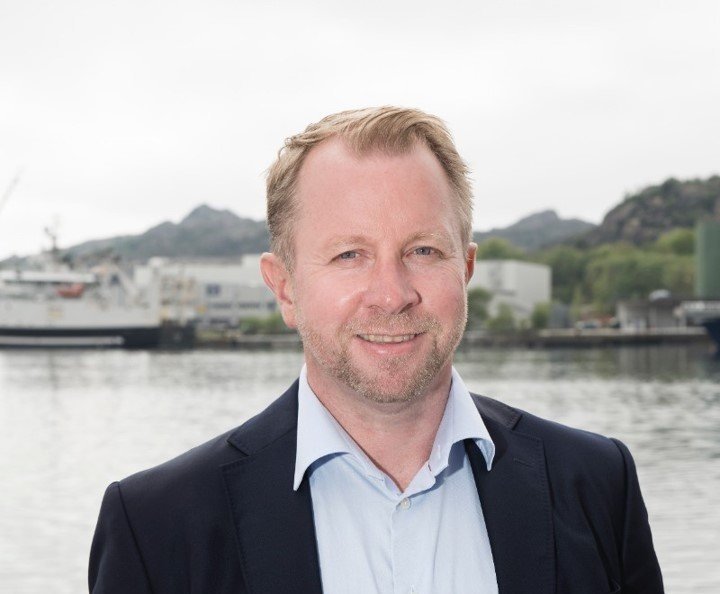Cluster Catch-Up: TechnipFMC
“We’re making great progress with the Deep Purple™ pilot project”
- Torunn Myhre, TechnipFMC
In the last Cluster Catch-up, we had a chat with Alma Clean Power about the commercialization of their Solid Oxide Fuel Cell technology. Now it is TechnipFMC’s turn.
TechnipFMC is a leading technology provider to the traditional and new energy industries; delivering fully integrated projects, products, and services. Their engagement in finding comprehensive solutions and reducing carbon emissions was a motivation to join/establish the Deep Purple Pilot.
We reached out to Torunn Myhre, the Chief Product Developer in TechnipFMC, for a chat. Myhre has more than 23 years of experience in the energy industry at TechnipFMC. Since 1999, Torunn has held several roles within project and tender engineering management, system engineering and technology development. Since the spring of 2022, she has been leading the Deep Purple™ Innovation Program.
Torunn Myhre, is leading the Deep Purple™ Innovation Program.
What is TechnipFMC’s primary focus right now?
TechnipFMC believes offshore will be the next frontier of the energy transition and is ready to accelerate and grow its contribution as a key enabler and integrator for the offshore renewables industry, Myhre explains. TechnipFMC’s new energies strategy – which leverages our expertise in subsea and surface projects – has three pillars: greenhouse gas removal, offshore floating renewables, and hydrogen. We’re also developing the Deep Purple™ system in Kongsberg, Norway. Deep Purple™ will provide sustainable offshore renewable energy production by integrating wind energy with hydrogen production and storage.
Deep Purple™ is combining renewable energy with hydrogen.
We see ourselves as energy architects because we excel at project integration, and offshore renewable markets have a robust potential for integrated solutions. For example, with Deep Purple™ we’re combining renewable energy with hydrogen. This way, we maximize energy generation and efficiency, because the capital expenditure and operational expenditure needed is much lower than a standalone product that generates the same amount of energy. We’re making great progress with the Deep Purple™ pilot project, which is scheduled to begin testing in January.
What are the biggest opportunities and challenges for TechnipFMC in the future?
Project integration is the biggest opportunity for us, because we can leverage what we already do in oil and gas – designing, engineering, manufacturing, and installing complex projects for use in extreme environments – to deliver renewable energy projects. We will be using a new integrated execution model, which builds on the success of our iEPCI™ approach to projects in traditional energy. In a complex and rapidly changing environment, a system integrator like TechnipFMC can play a meaningful role in enabling offshore renewable solutions.
Myhre also sees some challenges for TechnipFMC:
When it comes to developing new technologies, the challenge is scalability. But, again, our experience in integrated projects tied with our manufacturing capabilities and established supply chain put us in position to make that challenge an opportunity.
How can hydrogen be a part of the solution for the future?
We believe hydrogen will be a crucial carrier for the storage and transportation of energy, as well as bringing reliability, stability, and efficiency to renewable sources. Our hydrogen strategy covers two areas: green hydrogen produced offshore by the electrolysis of water using renewable energy, and off-grid energy systems delivering renewable, stable power to remote locations. And we have expertise in associated technologies such as umbilical cables and flexible and rigid pipes, to name a few.
What is your primary focus when it comes to sustainability?
Sustainability is one of our foundational beliefs, and we take a holistic approach that goes beyond finding solutions that reduce our emissions and our clients’ emissions. For us, it is part of our DNA that we act responsibly and always consider our impact on the planet, people, and communities where we live and work. Sustainability is intrinsic to our Environmental, Social, and Governance roadmap, which covers not only our commitment to reduce our Scope 1 and Scope 2 emissions by 50 percent by 2030, but also how we make a difference in communities, how we uphold human rights practices, and how we maintain integrity as a business, extending through to our supply chain.
Why did you decide on becoming a member of Ocean Hyway Cluster?
One company or organization acting alone would never be able to achieve the change that’s needed. Joining the Ocean Hyway Cluster puts us in contact with a range of experts who are pushing in the same direction, gives us fresh perspectives, and keeps us up to date with the evolution of the hydrogen sector in Norway. It’s an important networking opportunity, enabling all the participants to broaden their understanding, Myhre ends.
Curious about a membership in Ocean Hyway Cluster? Have a look here.
Siri Odijk Solbakken
Communications Advisor
+47 977 53 065
siri@hubforocean.no







